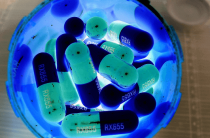Allergy can rightly be considered a disease of our century. Alas, such words as allergens and allergic people in the modern world do not surprise anyone. The essence of this disease is that upon contact with an allergen, allergic reactions develop due to the activity of the immune system.
What is an allergy?
Food, animal hair, dust, plant pollen, ultraviolet radiation, drugs, chemical products - all these and other substances can be allergens and pose a potential hazard to the patient's health. Allergy symptoms can cause significant discomfort to the patient, but the danger of this disease does not end there. Allergic reactions can occur in an extremely acute form, with spasm of the bronchi and swelling of the larynx, which can significantly complicate breathing.
A reliable means of avoiding allergic manifestations is the complete elimination of contact with the allergen. Sometimes it can be difficult to determine what a person is allergic to without special tests. So, for example, it happens with an allergy to plant pollen, when at the same time the patient is surrounded by many plants - potential allergens.
The exact nature of the allergy has not yet been found. It is only known that certain substances, entering the body, are recognized with the help of a special set of antibodies. As a result of exposure to antibodies, biologically active substances are released that provoke the development of allergy symptoms.
Just as the cause of allergies has not been found, so far no cure for allergies has been found. Therapy against allergies is based on the removal of symptoms, but it is not able to eliminate the pathological immune response.
Allergy symptoms
- dermatological manifestations. This allergic symptomatology is characterized by the appearance of blisters on the skin, a burning sensation and itching, the skin begins to peel off, change its color, and may become drier.
- Asthmatic manifestations, characterized by shortness of breath with wheezing, the appearance of shortness of breath.
- Swelling and congestion of the nose, increased secretion of serous fluid;
- Redness of the eyes, lacrimation, manifestation of symptoms of conjunctivitis;
- Weakness and daytime sleepiness;
- palpitations and irritability;
Allergy symptoms are taken into account in the overall picture of the diagnosis, and also serve as the basis for specific tests to detect allergies. However, symptoms alone are not a reliable means of making an accurate diagnosis.
Allergy test
The following tests are used to identify specific allergens and general health:
General blood analysis. A general blood test is the first analysis that a patient takes in all cases. Blood is a liquid in our body with a transport function, the diagnosis of its condition can tell a lot about the health of the patient. During an allergy, the level of eosinophil cells in the blood rises. Eosinophils are immune cells that destroy cells that are foreign to our body. Their increase occurs upon contact with the allergen or during parasitic invasion. The absence of parasites in the body, the conclusion of which is made on the basis of special tests, is the reason for further diagnostic measures in line with allergies.
Analysis for total immunoglobulins
Immunoglobulins are special proteins that are able to bind to allergens penetrating the human body into a stable complex. This complex serves as a kind of trigger for allergic reactions. In most cases of allergic diseases, a large amount of immunoglobulins is formed in the blood serum. However, this does not always happen. There are cases when a patient has persistent allergy symptoms, while the amount of total immunoglobulins does not exceed normal values. In this case, an analysis is carried out for special allergens.
Analysis for special immunoglobulins
Special antibodies - class G immunoglobulins are a more reliable diagnostic tool, since the appearance of such antibodies in the blood occurs as a result of the action of a special allergen.
Venous blood is needed to detect antibodies. These analyzes are carried out both in the clinic and in special medical centers, as well as laboratories. These are simple tests for which special measures are not necessary.
Scarification tests
The essence of this method is that when a minimum amount of allergen is introduced into shallow cuts on the skin, specific reactions will appear on them. The skin on contact with allergens changes color, becomes blistered, exudes serous fluid and expresses other manifestations of dermatitis. The results of exposure to the allergen may not appear immediately, although it often happens within a few minutes. However, if the immune response is delayed, dermatological symptoms may appear after a few days.
Scarification tests are necessary because in this way it is possible to identify a specific allergen, or an allergenic group. However, this method has a significant disadvantage - it is necessary to comply with strict security measures for the patient. The fact is that even a minimal amount of an allergen in some patients can cause severe allergic manifestations that require emergency medical care.
For this reason, scratch tests are not carried out in the elderly, pregnant women and young children. A few days before the procedure, it is necessary to refrain from taking antihistamines, as they inhibit allergic reactions.
Allergic symptoms may resemble those of a cold. Therefore, if after contact with a certain substance you begin to notice such symptoms, you should immediately contact a special doctor - an allergist. Without special laboratory tests, it is not always possible to distinguish allergies from SARS.
Allergy treatment
After a diagnosis of allergy was made on the basis of a comprehensive and complete examination of the patient, it is necessary to immediately begin treatment of this disease.
Antihistamines:
Unpleasant allergy symptoms are caused by exposure to this hormone. Connecting with the allergen in a complex, antibodies begin to travel through the body, in contact with special cells containing histamine, they change the shape of their cell membrane, as a result of which histamine, being released, provokes allergic symptoms.
Histamine by its nature is a hormone, that is, a substance that changes cellular metabolism. In order for it to connect with the target cell and cause allergic reactions, it must interact with the receptor. Antihistamines have a greater affinity for histamine receptors than the hormone itself, so they occupy the receptors, preventing histamine from affecting the body.
The first antihistamines had a large list of side effects. Due to the specifics of the active substances, contact with the receptors occurred no more than 4-6 hours, which required a large dose and frequent use. Modern drugs are almost devoid of side effects, require taking only once a day with a minimum dosage.
Corticosteroids:
Corticosteroids are synthetic analogues of the hormone cortisol. Their action is based on the anti-allergic effect of cortisol, which in this case is the opposite of histamine. Corticosteroids are available in the form of injections, for intramuscular administration, as well as in the form of ointments and creams for external use to relieve the symptoms of dermatitis.
Corticosteroids have a high risk of developing unwanted side effects. Therefore, they must be used in short courses, under constant medical supervision.
Allergy Precautions
If you are allergic, you need to take special precautions. Persons with a predisposition to Quincke's edema and anaphylactic shock should notify their friends, relatives, acquaintances and colleagues about this. Such patients must have a special kit with them to relieve acute manifestations of allergies (adrenaline, corticosteroids, antihistamines, anti-asthma drugs, etc.) and must be able to use it without fail. It is also necessary to acquaint close people with the use of this set.
Allergy to drugs requires special precautions. So, those who are allergic to drugs should have a card with them indicating the list of drugs to which the patient is allergic. Situations are different, so medical assistance can be provided when the patient is unconscious or there is no time to find out from relatives about a possible allergy to drugs. People who are allergic to drugs need to carefully familiarize themselves with the composition of drugs. It must be remembered that the trade name of the drug and the active substance do not always match.
Remember that only a specialist should deal with the diagnosis, as well as the treatment of allergy symptoms. Incorrect treatment of allergies caused by improper intake of antiallergic drugs can significantly aggravate health problems. We categorically warn you against self-treatment, which is potentially dangerous to health and life.















